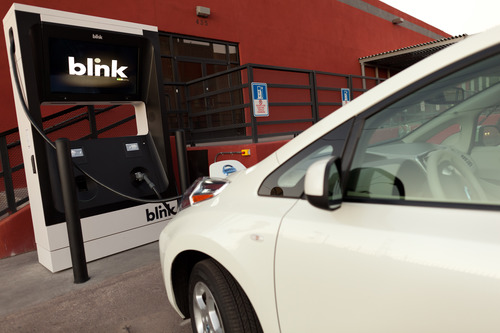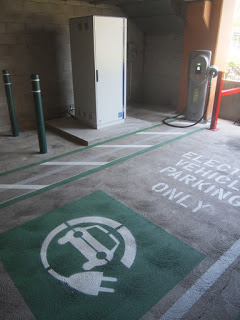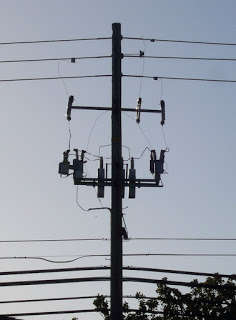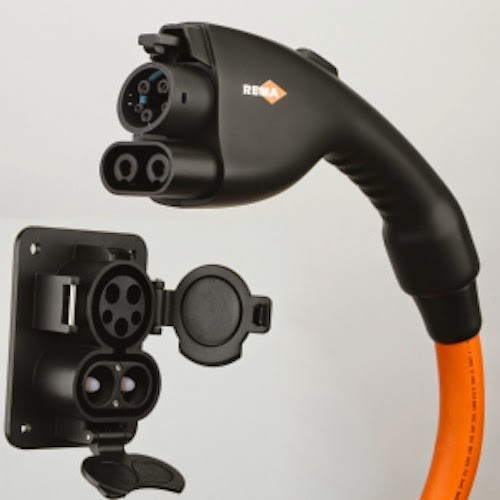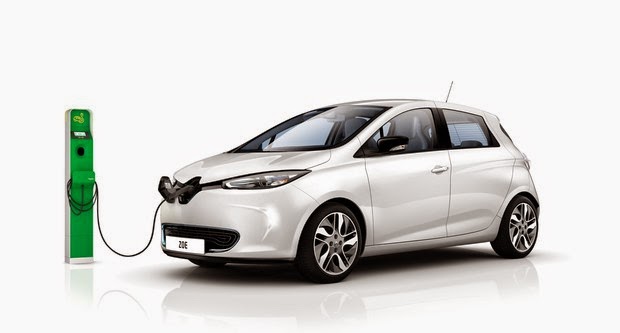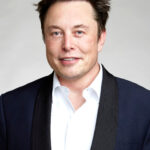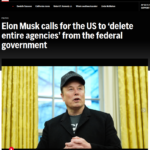It’s thought that DC Fast Chargers deployment is a crucial element to widespread electric car adoption. For example, the Japanese deployed a widespread CHAdeMO network in 2008 and immediately saw electric car utilization rates go up![]() . My feeling is that fast charging is the way to implement the normal behavior around cars – that we drive around and around, stopping in a station for a quick fillup when needed. In any case, earlier today Navigent Research presented a Webinar titled “Fast DC Charging for Electric VehiclesCHAdeMO, Combo Chargers, and the Future of Electric Vehicle Charging
. My feeling is that fast charging is the way to implement the normal behavior around cars – that we drive around and around, stopping in a station for a quick fillup when needed. In any case, earlier today Navigent Research presented a Webinar titled “Fast DC Charging for Electric VehiclesCHAdeMO, Combo Chargers, and the Future of Electric Vehicle Charging![]() ” which went over the current status of DC Fast Charging.
” which went over the current status of DC Fast Charging.
Most of the webinar focused on the standards battle between CHAdeMO and SAE DC Fast Charging, as well as the Tesla Supercharger system. This is covered towards the end of this post.
Why is fast charging important? They claimed these points:-
- Owner convenience, and reduced charging times
- Relieving range anxiety
- Better model for public charging
- Reduction of battery pack size, and vehicle cost (see Are electric cars with small battery packs and fast charging a great combination for EV adoption?)
But there are barriers preventing DC fast charging adoption, and in turn this is slowing down electric car adoption:-
- Equipment and installation cost is high (but the costs are falling rapidly)
- Infrastructure limits (50+ kilowatt loads could strain the grid – and demand charges are high)
- Business model is tricky, chicken-and-egg where fast charging station deployment requires cars, but prospective car owners want to see charging stations in the public before buying
- Slow BEV market growth – fleet owners could be where it takes off more rapidly
- Standards conflict between CHAdeMO and SAE DC Fast Charging
Equipment and installation cost – I don’t know what the costs of the charging stations are, nor the ins-and-outs of the installation cost. I understand they’re pretty high, but it’s pretty clear just from the equipment that it’s expensive stuff. The picture to the right is a CHAdeMO charging station installed at Stanford Shopping Center in May 2012. The big box on the left is the “rectifier” while the smaller box on the right is where the charging hose is attached. That unit is itself a rather large pedestal, with an LCD display screen, and the CHAdeMO charging cord hanging in a holder. The box on the left is the size of a large refrigerator. The whole installation is sitting next to the main power room for the parking garage.
Powering the unit is a 480 volt 3 phase AC line capable of 50 kilowatts of power. These sorts of circuits do not come cheap. And the equipment reeks of “EXPENSIVE”.
There are at least two vendors beginning to sell “medium-fast charging” equipment – Fuji Electric and ABB. Both are rated for 25 kilowatts rather than 50+ kilowatts, can connect to less expensive 240 volt three phase AC lines, are much smaller boxes, etc. According to Fuji Electric, these add a small amount to the charging time, but not as much as one would expect. Not only is the equipment less expensive to buy and install, it hits a sweet spot in demand charges making these more economical to operate.
See CHADEMO and SAE DC Fast Charging Stations for electric vehicles![]() and ABB and Fuji move forward on lower cost CHAdeMO electric car fast charging stations
and ABB and Fuji move forward on lower cost CHAdeMO electric car fast charging stations![]()
Clearly – a charging network operator facing expensive equipment & operations costs is going to proceed slowly unless they see demand for the charging network.
Infrastructure limits – Theoretically the utility companies have exactly two concerns about whether the growth of electric car adoption will “strain the grid”. This bugaboo is bandied about as one of the FUD points that cause people to think electric cars aren’t a great solution. The actual utility company concerns should allay the FUD … However, fast charging is a different animal and does present an electricity grid infrastructure issue.
The typical concerns stated by utility companies
- Hot summer afternoon when all the air conditioners are cranked to 11 and the grid is already stretched to the limit
At the neighborhood level, suppose a whole string of neighbors get the EV bug all at once, they all install charging stations. It could overload the transformer serving THAT NEIGHBORHOOD.
The utility companies aren’t worried about the general case of EV’s swamping the capacity of the whole grid. Instead they’re concerned about those two cases.
However, fast chargers because of the power level they consume (50 kilowatts in quick bursts) are a different animal from a 6 kilowatt level 2 charging station. First, each specific charging station installation should work out okay because the process is going to include capacity assessment and ensuring the transformer serving that charging station has enough capacity.
But the utility companies tend to charge extra fees for customers that have bursty demands. A DC fast charging station is an example – when the car plugs in to charge, the electricity demand immediately goes to 50 kilowatts and stays there for 10ish minutes before starting to drop as the battery pack fills. That load is on the order of 25 houses worth of electricity. Further there is no way to schedule this, because the demand is initiated when a customer drives up to the charging station and plugs in.
The standards battle
There are two kinds of people in the world.. those who think there are two kinds of people in the world, and those who don’t.
There’s a tendency to form two (or more) camps of opposing opinions and implementations of any given idea. We had this in VCR’s back in the day (VHS versus Betamax) and in the electric vehicle industry it’s CHAdeMO versus SAE Combo Charging System. An also-ran is Tesla’s proprietary Supercharger system – in that it’s a non-standard system that may or may not see wide adoption; the Navigent people dismissed it and focused on CHAdeMO versus SAE.
The CHAdeMO standard was originated by the Japanese (specifically, TEPCO) and primarily was adopted by Japanese car companies. The US and German car companies didn’t want to adopt that standard, and instead chose to work through the SAE to develop a different standard![]() . That was finalized in late 2012 and is the plug/socket pictured to the right.
. That was finalized in late 2012 and is the plug/socket pictured to the right.
See EV Fast Charging, whether standardized or not![]() for more details on the controversy.
for more details on the controversy.
This meant that deployment of fast charging was delayed because charging station network operators had uncertainty over which standard to support. If a network operator were to have installed hundreds of CHAdeMO charging stations across the U.S. only to see the market adopt a different standard, that network operator would have stranded a lot of investment capital in useless charging stations.
The result in the U.S. is that the EV’s with fast charging support are the Nissan Leaf, and the other EV’s do not have fast charging support. The Chevy Spark EV will be the first EV on the market to support the SAE Combo System![]() .
.
Nissan is doing what they can to encourage adoption of CHAdeMO. They’re continuing to sell the LEAF with CHAdeMO support. Further, Nissan is planning to deploy CHAdeMO fast charging stations to over 500 dealerships around the U.S.![]() and has partnered with eVgo to deploy fast charging stations in the Washington DC area. In other words, Nissan isn’t giving up on CHAdeMO and is looking to establish it as a de-facto standard having failed to get the SAE to adopt it as the fast charging standard.
and has partnered with eVgo to deploy fast charging stations in the Washington DC area. In other words, Nissan isn’t giving up on CHAdeMO and is looking to establish it as a de-facto standard having failed to get the SAE to adopt it as the fast charging standard.
There’s a certain amount of rancor within the industry over this. A year ago GM’s Shad Balch threw a verbal punch at a Nissan representative during a California Senate hearing over the controversy![]() . I was witness to a meeting at Plugin2010 where a Mitsubishi employee accused GM and others on the SAE committee of colluding to delay fast charging adoption in order to hurt Nissan’s EV sales
. I was witness to a meeting at Plugin2010 where a Mitsubishi employee accused GM and others on the SAE committee of colluding to delay fast charging adoption in order to hurt Nissan’s EV sales![]() .
.
But, wait, that’s not all for fast charging.
There’s Tesla’s Supercharger system which is proprietary-to-Tesla and which the company plans to install across the U.S. and Europe. We wonder just what they have in mind, what the business plan is, and whether it will sink Tesla.
The other is the Renault ZOE which is using a 43 kilowatt 3 phase AC charging system built into the car, rather than using external DC fast charging systems![]() . Why go through the expense of building an expensive external charging unit when the car can do it itself?
. Why go through the expense of building an expensive external charging unit when the car can do it itself?
What was the take of the Webinar presenters about fast charging system prospects?
First, they focused primarily on the VHS/Beta style battle of CHAdeMO versus SAE. They brushed off the Tesla Supercharger system as more of a distraction rather than something which will be a major force in the industry. I think this may be short-sighted of them, but who knows what the future will hold in store.
Second, they refused to flat out say that CHAdeMO will certainly die. They pussyfooted around this issue, instead talking about adoption rates and whatnot. But they presented a fairly strong case that CHAdeMO is probably going to remain strong until 2015ish, and starting in 2017 the SAE DC Fast Charging system will take off and become dominant by 2020.
Why?
The SAE DC Fast Charging system is not available in cars yet – while the CHAdeMO system is. That means there is an incumbent fleet of CHAdeMO cars on the roads, and that the SAE system is having to start from scratch to build up customer adoption.
There are two aspects to which of the systems will win in the market: a) the manufacturers make choices about what to put in their respective cars, b) the customers buy what they buy
If the customers flock to the Nissan Leaf and ignore electric cars from other manufacturers then CHAdeMO will win. However, what’s more likely is that the customers will buy the brands they want without having an informed opinion over CHAdeMO-versus-SAE. After all, that’s how VHS won over Beta (the superior system) because the customers didn’t care about technical things, and instead went with other reasons to buy VHS.
This means there will be a phase-over where the SAE system will be the winner because it’s standard. In other words, because the manufacturers have chosen the SAE system, it’s the SAE system that will be in most car dealerships, and eventually that’s what the customers will be buying. That’s how the people in the webinar portrayed it.
The results may turn out different. The Tesla Supercharger may become a more important system than they’re expecting. Or Nissan could have more success with the LEAF than is expected. If Nissan manages to become associated with fast charging before the other vendors get their fast charging act together …etc… UPDATE: As I write below, there are problems with the SAE-will-win view.
They didn’t think it was feasible to retrofit CHAdeMO cars or charging stations to support the SAE system. In cars it would mean removing a bunch of equipment, and installing new equipment inside the car. At a charging station you’d do something similar. The plugs are different, the number of pins are different, the communications protocols are different, etc. I don’t think there’s a possibility to design an adapter either.
The issue they mentioned in the webinar is that while it’s technically feasible to do a retrofit, the result is problematic to get the necessary certifications that everything was done correctly. The equipment would likely lose its UL approval unless recertified. The retrofit would be so expensive to make it uneconomic.
What about the Tesla Supercharger system? (UPDATE) The original version of this post drew a long comment thread![]() that started off with a spot-on defense of the Supercharger system. The Navigent folks dismissed that system, as I said earlier, in a way that sounded like they expect it to not make much difference. But there are some interesting aspects to the system.
that started off with a spot-on defense of the Supercharger system. The Navigent folks dismissed that system, as I said earlier, in a way that sounded like they expect it to not make much difference. But there are some interesting aspects to the system.
Tesla controls both ends of the equation and can optimize the car and the charging system together. For example, they reuse components from the on-board charging system to implement the Supercharger.
Tesla is treating the expense of the Supercharger network as a marketing expense to drive car sales.
Isn’t it the SAE DC Fast Charging system that has the problems? (UPDATE) Adoption of the SAE system is starting off with a big disadvantage – the incumbent CHADEMO cars and infrastructure. For example the whole of Estonia is being wired up with CHADEMO chargers.
The above marketing prediction was a characterization of what Navigents’ people said in the webinar. I tend to agree with them .. but things may turn out differently.
In the HD-DVD-versus-Bluray market battle the standard (HD-DVD) lost to Bluray because the backer of Bluray did a better job of competing. I think though that Bluray (and DVD and VHS) is going to lose in the long run to streaming video over the Internet. Maybe.
In the meantime the chicken-and-egg issue for the SAE Fast Charge compatible cars will be worse than it was for the CHADEMO cars. That is, the SAE compatible cars will be facing a charging environment that’s tilted against them, and getting more tilted with every announcement of CHADEMO deployments. Just this week – ECOtality and Krogers expanding electric car charging station partnership![]() – came news of deployment of 25 CHADEMO stations at Kroger stores.
– came news of deployment of 25 CHADEMO stations at Kroger stores.
- Highway design could decrease death and injury risk, if “we” chose smarter designs - March 28, 2015
- GM really did trademark “range anxiety”, only later to abandon that mark - March 25, 2015
- US Government releases new regulations on hydraulic fracturing, that some call “toothless” - March 20, 2015
- Tesla Motors magic pill to solve range anxiety doesn’t quite instill range confidence - March 19, 2015
- Update on Galena IL oil train – 21 cars involved, which were the supposedly safer CP1232 design - March 7, 2015
- Another oil bomb train – why are they shipping crude oil by train? – Symptoms of fossil fuel addiction - March 6, 2015
- Chevron relinquishes fracking in Romania, as part of broader pull-out from Eastern European fracking operations - February 22, 2015
- Answer anti- electric car articles with truth and pride – truth outshines all distortions - February 19, 2015
- Apple taking big risk on developing a car? Please, Apple, don’t go there! - February 16, 2015
- Toyota, Nissan, Honda working on Japanese fuel cell infrastructure for Japanese government - February 12, 2015




